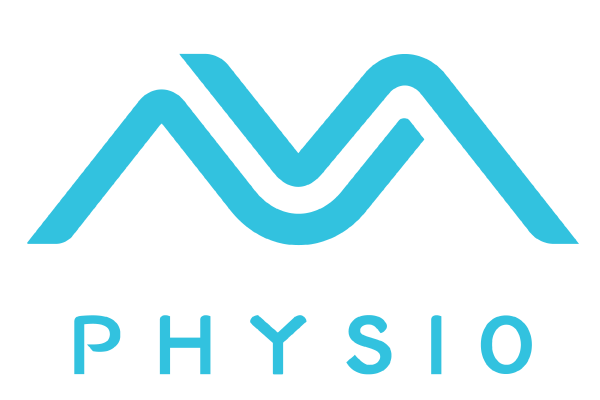Hip rehabilitation is a crucial aspect of recovering from hip injuries, surgeries, or conditions that affect the hip joint. One exercise that is often recommended by physiotherapists is hip abduction with knee bending. This article will explore the mechanics and benefits of hip abduction with knee bending exercises and provide a step-by-step guide on how to perform them correctly.
What You Will Learn by Reading This Article:
- The mechanics and technique of hip abduction with knee bending exercise for hip physiotherapy.
- The benefits of incorporating knee bending for added challenge and muscle engagement.
- Precautions and considerations when performing this exercise and how to incorporate it into a comprehensive rehabilitation program.
Understanding Hip Abduction with Knee Bending Exercise
Hip abduction with knee bending is a compound exercise that involves the movement of both the hip and knee joints. This exercise targets the hip abductor muscles, such as the gluteus medius and gluteus minimus, which are crucial for hip stability, balance, and proper gait mechanics.
To perform this exercise, start by lying on your side with your legs stacked on top of each other. Bend your knees to a 90-degree angle and keep your feet together. This starting position ensures that your hips are in a neutral position.
To initiate the movement, slowly lift your top leg away from the other leg while keeping your feet together. Focus on using your hip abductor muscles to lift the leg and avoid using momentum or swinging the leg. As you lift your leg, aim to achieve a comfortable range of motion without any pain or discomfort. Pause at the top for a brief moment and then lower the leg back down to the starting position in a controlled manner.
Use of Merlin Physio App for Hip Abduction
The Merlin Physio App is a versatile tool that can significantly assist with hip abduction exercises, benefiting both physiotherapists and their patients. Hip abduction exercises are commonly prescribed for various conditions, such as hip pain, injuries, and post-surgery rehabilitation. Here’s how the app can help with hip abduction exercises:
- Customized Exercise Plans: The app can create personalized exercise plans tailored to the patient’s specific needs. For hip abduction, it can recommend exercises that are appropriate for the individual’s condition and track progress over time.
- Video Demonstrations: To ensure that patients perform hip abduction exercises correctly, the app can provide video demonstrations. This visual guidance helps patients understand the proper form and technique, reducing the risk of injury and optimizing the effectiveness of the exercises.
- Real-Time Feedback: The app offers real-time feedback to patients while they perform hip abduction exercises. It can use AI to analyze their movements and provide immediate cues to correct their posture or technique. This feature helps patients make the most out of each exercise session.
- Progress Tracking: Keeping track of progress is essential for effective physiotherapy. The Merlin Physio App allows physiotherapists to monitor a patient’s hip abduction exercises and track improvements. It can generate reports and graphs, making it easy to visualize progress over time.
Benefits of Incorporating Knee Bending for Added Challenge and Muscle Engagement
Adding knee bending to the hip abduction exercise introduces an additional challenge and engages the muscles in a slightly different way. When you bend the knee, it increases the lever arm and places more demand on the hip abductors to lift the leg against the resistance created by the bent knee.
This added challenge can further strengthen the hip abductor muscles and improve their ability to stabilize the hip joint. Additionally, incorporating knee bending into the exercise can help activate other muscles in the lower body, such as the quadriceps and hamstrings, which can contribute to overall leg strength and stability.
Step-by-Step Guide to Performing Hip Abduction with Knee Bending
To perform hip abduction with knee bending correctly, follow these step-by-step instructions:
- Lie on your side with your legs stacked on top of each other.
- Bend your knees to a 90-degree angle and keep your feet together.
- Engage your core muscles to maintain stability throughout the exercise.
- Slowly lift your top leg away from the other leg, focusing on using your hip abductor muscles.
- Lift the leg to a comfortable range of motion without any pain or discomfort.
- Pause at the top of the movement for a brief moment.
- Lower the leg back down to the starting position in a controlled manner.
- Repeat the exercise for the desired number of repetitions.
- Switch sides and perform the exercise on the opposite leg.
Benefits of Hip Abduction with Knee Bending Exercise
1. Improving Hip Strength, Stability, and Mobility
Hip abduction with knee bending exercises are highly effective for improving hip strength, stability, and mobility. By targeting the hip abductor muscles, these exercises help build strength in the muscles that support and stabilize the hip joint. This increased strength can enhance overall hip stability, improve balance, and reduce the risk of falls or other injuries.
2. Alleviating Hip Pain and Discomfort
Hip abduction with knee bending exercises can be beneficial for individuals experiencing hip pain or discomfort. Strengthening the hip abductor muscles can help alleviate pain caused by hip joint instability, muscle imbalances, or overuse injuries. By improving hip stability and alignment, these exercises can provide relief and promote healing in the affected area.
3. Enhancing Lower Body Function and Reducing the Risk of Future Injuries
Strong hip abductor muscles play a crucial role in lower body function and can help reduce the risk of future injuries. These muscles contribute to proper gait mechanics, balance, and stability during various movements. By incorporating hip abduction exercises into your routine, you can enhance lower body function and reduce the likelihood of injuries, particularly in the hips, knees, and ankles.

